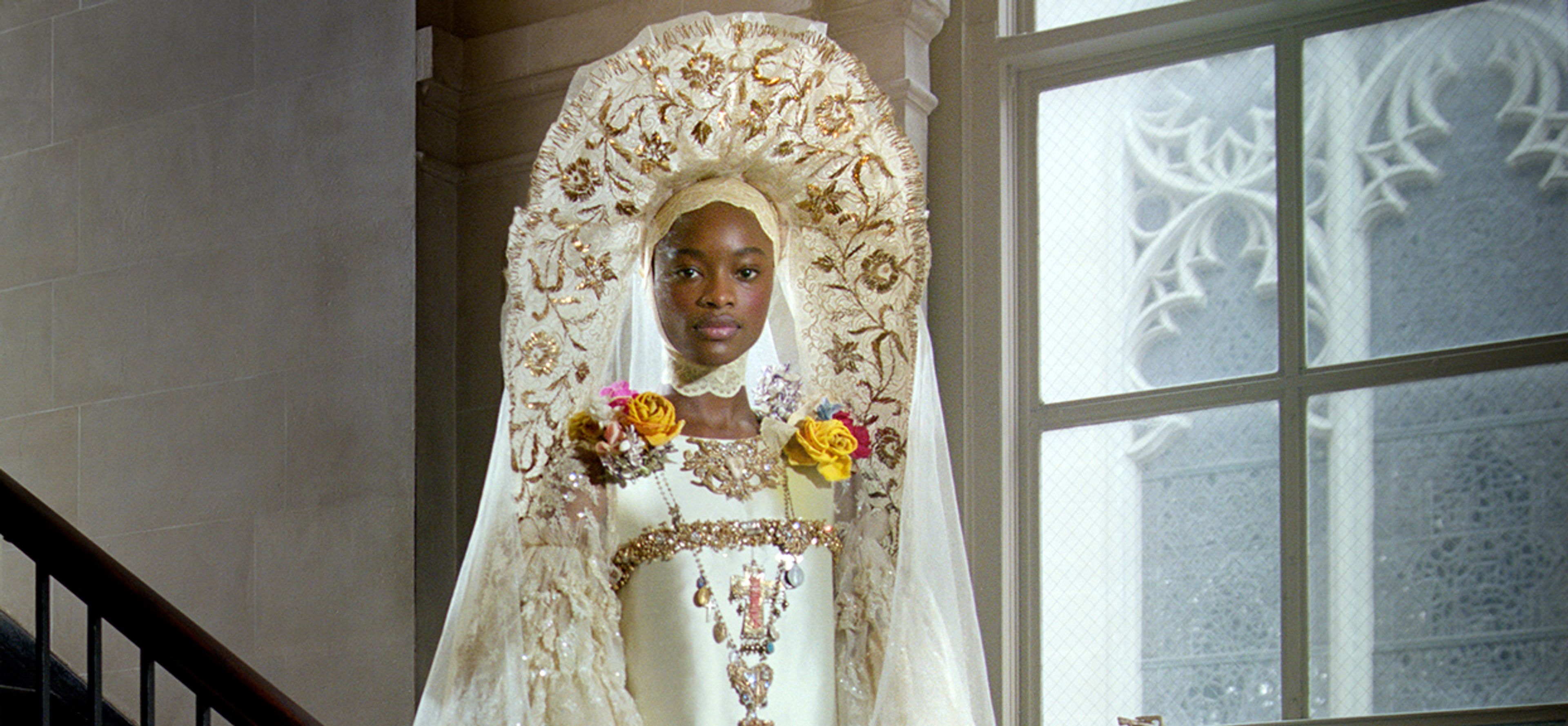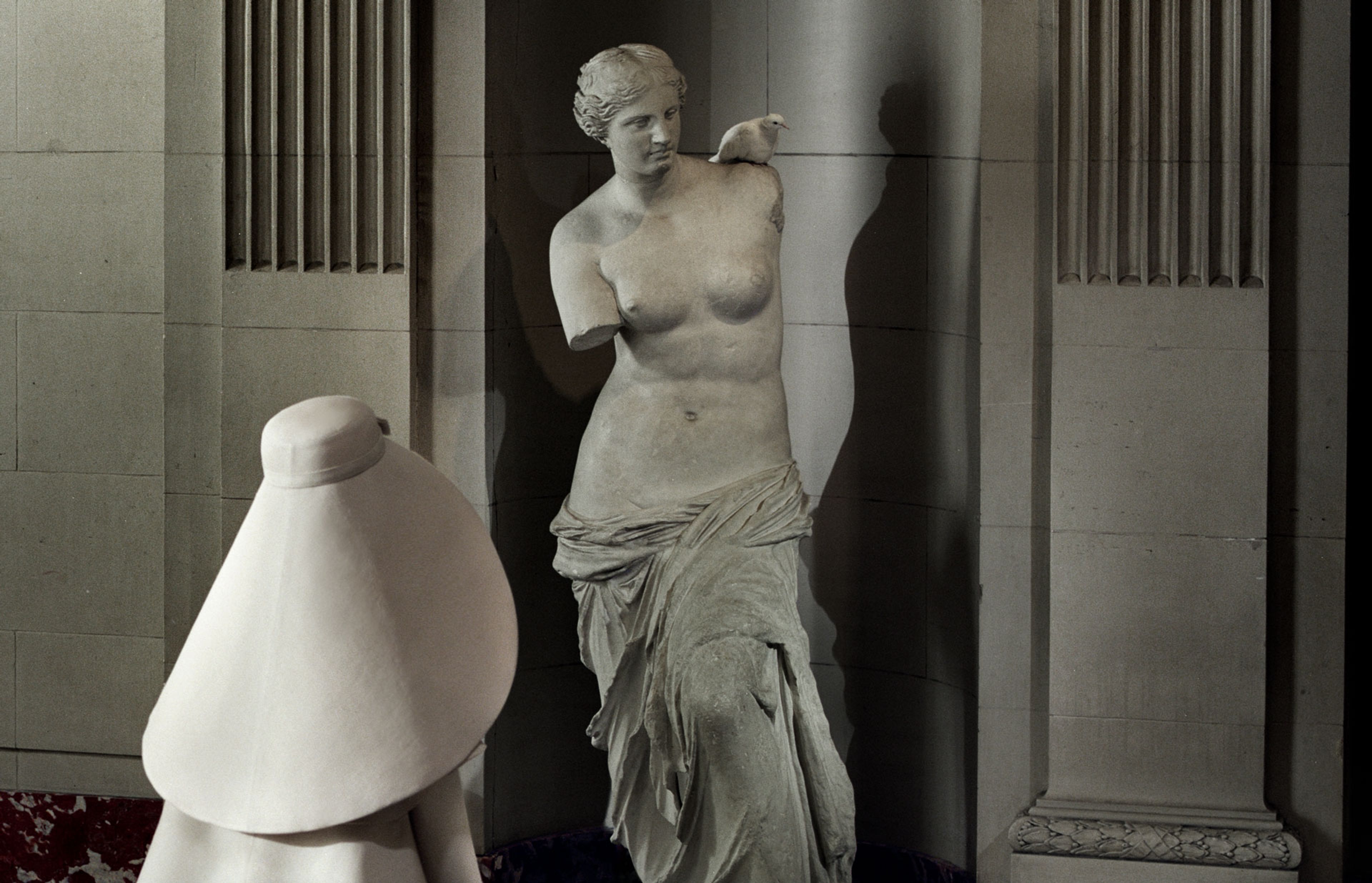The legendary fashion editor reflects on a unique project
May 29, 2020
To be updated on upcoming exhibitions and other news, sign up to our newsletter here and follow us @davidzwirner.
In 2018, Vogue commissioned Philip-Lorca diCorcia [P-L] to create a series of photographs based on Heavenly Bodies: Fashion and the Catholic Imagination, The Costume Institute’s critically acclaimed spring exhibition at The Metropolitan Museum of Art, New York. In this interview, the magazine’s then Executive Fashion Editor (now Contributing Editor), Phyllis Posnick reflects on collaborating with P-L for this unique project.
How is P-L different in the way that he works compared with other fashion photographers you’ve collaborated with? I don’t think of him as a fashion photographer. Every photographer is different and each has their own process. P-L’s process is old school, which I love. Things happen so fast now, and everything seems to be arranged in a few emails or through an agent. For me, this isn’t the most creative way to produce the best results. What I liked about working with him was that he took the time to plan….We had many meetings, endless conversations, and it got us to these beautiful photographs, which was a pretty good place. You’ve said that when working with a photographer, you try to see through their eyes. I wondered how that translated in P-L’s case. Well, I couldn’t see through his eyes! For our first meeting, he came to my office and I showed him a wide edit of clothes that we were considering. It was the first time I’d worked with him, and I had no idea how he created his photos, or how he envisioned fashion. We spoke for a good hour. He studied the clothes. I explained what the groupings meant for the exhibition, how many pages we were hoping to have, the models we wanted to use. Then, when the meeting ended, we agreed that we’d keep talking once he had thought about locations and after I rearranged some of the pairings. By the time he’d reached the elevator, I realized I had no idea what else had transpired. His process is still a mystery. To me, these dresses are a gift for any photographer. One could take the dresses and put them in a studio with good light and make beautiful pictures. There are many photographers who would do that very well. But P-L went beyond photographing beautiful dresses. I liked that he really saw a different kind of picture well before we were scheduled to shoot.. That may sound strange, but not every photographer works that way... sometimes a photographer would find the pictures on the day of the shoot, which is fine too. But P-L had his pictures in his head–he saw the clothes and matched the locations to the image he had in his mind. He knew exactly how he would shoot each photo in each location—and that was very reassuring. In addition, the elements he added almost told a story. He connected the photographs to The Met exhibition. The picture of Victoria Ceretti in John Galliano’s red dress for Dior haute couture was a nod to an El Greco painting...but with the lovely unexpected addition of a baby peeking out from under the dress. Yes, the Cardinal [Cardinal Fernando Niño de Guevara, c. 1600]. And of course Andrew Bolton, the curator of the exhibition, was also involved? Andrew Bolton and everyone at The Costume Institute were incredibly supportive and helpful. They gave us tremendous freedom to do what we needed to get these photos. As did Vogue. We had wonderful people from The Met with us to take care of the clothes, pack and unpack the huge boxes, and dress the models. Andrew knew nothing about our plans to put the lambs in the photo of Mayowa Nicholas in the Christian Lacroix haute couture dress. However, he did get a report about the doves from our dressers, even though we closed off the room where we were shooting. The doves were wonderful in the photograph, but they kept flying around the room before landing on the models (as you can see in the picture) and I was terrified that I would have to call Andrew to tell him that there were bird droppings on the priceless Cristóbal Balenciaga dress that was so fragile that we had to photograph it on a mannequin rather than a model. Andrew later told me that even before we finished shooting, he had researched how to remove this type of stain from silk gazar. He said he could think of nothing else until he knew all was ok. It was...we were extremely lucky and relieved that there were no droppings that day. I was looking online at your book Stoppers: Photographs from My Life at Vogue, which features photographs that stop you in your tracks as you flip through a magazine. I wondered if it’s possible to summarize what “stops” you about these Heavenly Bodies photographs, or about P-L’s work in general? I think of a stopper as a strong, beautiful, unique photograph. P-L spends a lot of time lighting his pictures—probably more than anyone I’ve ever worked with. It helps define his photos. When we started the shoot we were in an empty space high up in a building in SoHo. He was depending on sunlight and shadows to make his picture. Of course, it rained. He spent a lot of time arranging and testing his light, changing it, moving it, and endlessly directing the models’ positions. What makes a stopper is everything: the light, the composition, the strength and beauty of the image, the depth of the image. In a magazine, it’s a photograph that stops readers from turning the page and makes them take time to look at the photograph. I wondered if you could touch on the sense of tension (perhaps social or political) that many detect underlying P-L’s photographs—do you sense that here? I’m not political in the work that I do. My goal is to help create a strong, memorable photograph to illustrate an article, tell a story, convey a message, whether it’s for an exhibition at The Costume Institute, or a food picture, a beauty trend, or a portrait. One wants the reader to look at the photograph and understand before even reading, what they’re looking at. In these pictures, there are references to paintings and icons, and angels. It wasn’t literal, but it was a connection to the story that The Costume Institute Exhibition was telling. I wondered if and how you feel P-L’s fashion photography has influenced the medium. These certainly aren’t typical fashion photographs; I think they go beyond the traditional idea of a fashion picture. Did you have a favorite memory or takeaway from this particular project? There were many—the patience and dedication of the models, as the process to set up the photos was very slow. It was as if the models were sitting for paintings. And the photographs are like paintings.The beautiful heads that the hairdresser Julien d’Ys and makeup artist Di Kendal created. P-L is very collaborative and I appreciated that. I never know what to expect the first time I work with a photographer, but he was very open to what I had to say. One of the best takeaways is the polaroid that P-L gave to me. It’s framed and sits in a special place. Credits for the Heavenly Bodies shoot: Fashion Editor: Phyllis Posnick. Hair and hairpieces created by Julien d’Ys for Julien d’Ys; Makeup: Diane Kendal; Manicure: Jin Soon Choi. Set Design: Andrea Stanley. Produced by PRODn at Art + Commerce. Models: Edie Campbell, Vittoria Ceretti, Mayowa Nicholas, Rianne Van Rompaey. Photographed at The National Academy of Design and The Dominick Hotel.
Image: Philip-Lorca diCorcia, Vogue, May 2018, #4, 2018 (detail)

